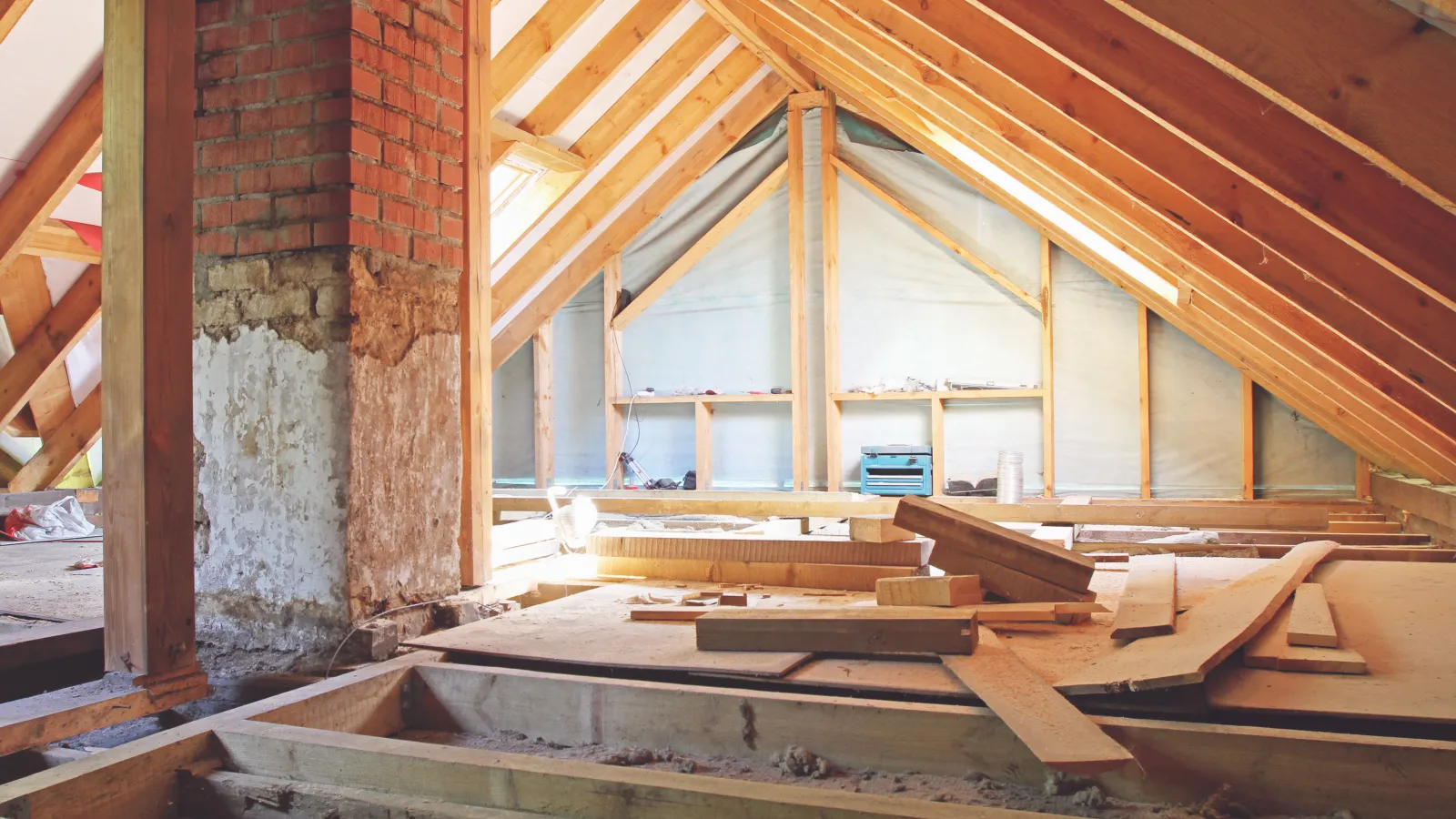You may have already addressed some of your home insulation needs, but what about the attic? Air-sealing your attic is an essential next step in insulating and protecting your home from heat, cold, and pests. It could also save a lot on your energy bill. So, what is air sealing, and how can it benefit your home?
What is Air Sealing?
Air sealing an attic is a standard procedure for building a home. A professional seals any gaps, cracks, seams, or other imperfections in places that separate conditioned spaces from unconditioned spaces like the ceiling that separates the living space from the attic space. Larger defects are covered or sealed using solid material, like OSB or rigid foam.
You can lose up to 25% of the air in your home through the attic. Therefore, all air sealing professionals perform their work according to the U.S. Department of Energy code.
How Does Air-Sealing Work?
Air sealing an attic begins with a professional inspecting your attic to identify the type of building envelope you have (conditioned attic or the traditional non-conditioned attic). They will then try and identify any water leaks, moisture, or pest damage. You must box any active, unboxed wiring in the attic before insulation or sealing can commence.
Both finished and unfinished surfaces should seal with caulk or spray foam. You must also fill any gaps around chimney flues or gas vents with high-temperature-rated foam.
All professionals use high-R-value rigid foam insulation or specifically designed hatchway covers for attic access panels, stairs, or doors. Any corners, adjoining spaces, or skylight shaft walls require an R-19 installation. Doing so creates a continuous seal.
How Can Air Sealing Benefit Your Home?
Sealing an attic prevents heat loss in the winter and heat gain in the summer. Pests can also get into your home through any unsealed cracks, joints, or penetrations in the roof.
Sealing your attic is also a cost-effective way to save on energy bills. It will reduce moisture and dust problems, which can affect your home’s durability.
All houses have a stack effect, or “suction,” that draws gases up through the building. Sealing an attic helps lessen this effect and draws less contaminated gases, like radon and soil gases, through the house. On the whole, air-sealing your attic improves your home’s durability, warmth, and comfort.
How to Air-Seal an Attic Step-by-Step
We’ll take you step-by-step through the process of both scheduling a quality attic sealing as well as how the sealing process itself will work. If you’re considering Air Sealing in your home, the process works best before any additional insulation is installed.
1) Call USA Installation. You’ll be able to talk to a real professional from the start of the call. We won’t use any automated voice messages or menus. If you like, we’ll even schedule a free consultation.
2) Once you’ve confirmed your appointment at least 24 hours prior, we’ll come to your home to evaluate and pick the best insulation method for you. We’ll be happy to educate you on all the available choices.
3) Installation only takes one day to complete. We’ll do our best not to make a mess, and ensure a safe, thorough cleanup. Per protocol, we’ll conduct a post-installation assessment to ensure we’ve done our best job possible.
4) We also conduct a walk-through immediately post-installation. We’ll include you in this step to see the work we’ve done and confirm your satisfaction. Finally, we’ll complete any additional paperwork or payments.
5) Around 48 hours after installation, we’ll give you a call to further confirm your satisfaction with our work. We’ll also send a survey to help us improve our installations going forward.
We know sealing an attic is a huge investment. We also want you to get the best bang for your buck. At USA Insulation, we offer quality products and installation plus peace of mind. Call USA Insulation to schedule a free consultation and get expert answers to all of your insulation questions.



